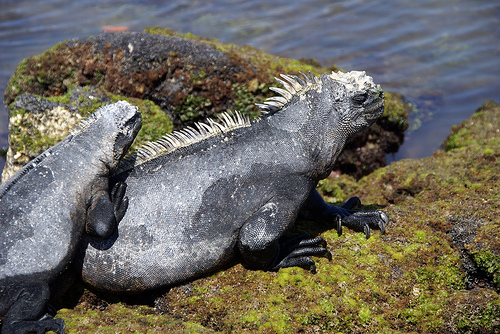Have you ever thought a photograph made you look fat? Well spare a thought for the Dodo. According to French researchers, portraits of Dodos (Raphus cucullatus) painted by seventeenth century artists may have added quite a few kilos. In fact, some seventeenth century estimates may have doubled the birds’ weight!
Using measurements taken from preserved Dodo skeletons, the French team estimated the average weight of an adult Dodo at 10.2kg. In comparison, seventeenth century eyewitnesses suggested the birds weighed as much as 22.7kg (or 50lb). Contemporary paintings often show the birds as large, rotund animals, but the French researchers suggest that this was either because they were exaggerated by the artists, pictures of overfed birds, or the birds were puffing out their feathers in a display of some kind.
To derive their svelt estimate, the researchers measured the lengths of the Dodo skeletons’ femur, tibiotarsus and tarsometatarsus bones. The result was lower than other modern attempts to gauge the mass of the Dodo.
As we’ve seen many times on Hypothesis Now, using preserved remains and fossils to investigate extinct animals can only tell us so much. Given some commentators believe the Earth is in the midst of a sixth mass extinction, this just reinforces the urgent need for conservation of species and entire ecosystems. Once they’re gone, we lose vital information about our world, and there’s no way to get it back.
Incidentally, the researchers here aren’t the only ones that thinks the Dodo could lose a few kilos. A new gallery opening on the 21st January at the Natural History Museum in London will show a seventeenth century painting next to a modern image painted by one of the palaeontologists at the museum. You can find further details of the exhibition here.
Paper reference: Angst, D., Buffetaut, E., & Abourachid, A. (2011) The end of the fat dodo? A new mass estimate for Raphus cucullatus. Naturwissenschaften. On-line first 15th January 2011. DOI: 10.1007/s00114-010-0759-7




 One of the most interesting things to arise from my recent interview with Bekey was the inside view of the National Health Service (NHS) response to suspected swine flu cases.
One of the most interesting things to arise from my recent interview with Bekey was the inside view of the National Health Service (NHS) response to suspected swine flu cases. The UK government are now focussed on
The UK government are now focussed on